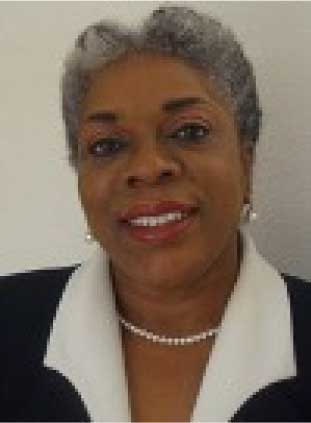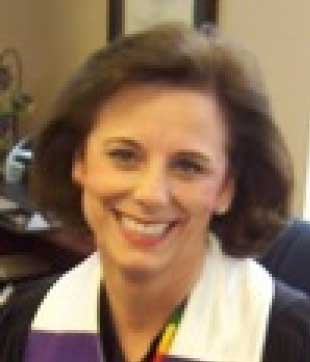by Elaine May*
Of the 467 United Methodist district superintendents appointed in the United States, 346 (74%) are men and 121 (26%) are women.
Those percentages are nearly equal to total the number of active United Methodist clergy in the nation; of the approximately 37,000 total U.S. clergy, clergywomen are 24% and clergymen are 76%. (See the January 2010 issue of The Flyer.) When compared with 2005 statistics, as reported in the October-December issue of The Flyer, the total number of U.S. women district superintendents increased by 3% over the last five years, from 23% to 26%. Therefore, women superintendents have increased in the past five years overall in the jurisdictional conferences, their numbers slightly higher than parity with clergy.
Jurisdictional breakdown
 Myrtle Hatcher is district superintendent in the Virginia Conference
Myrtle Hatcher is district superintendent in the Virginia Conference In 2005, the Western Jurisdiction led with 36% of women district superintendents. Today, the Western Jurisdiction continues to have the largest percentage, with 44%. Northeastern Jurisdiction had 32% women in 2005 and now has 33%. The number of women district superintendents in the North Central Jurisdiction decreased from 30% in 2005 to 28% currently. The South Central Jurisdiction had the lowest number of women of any U.S. region in in 2005 (13%); as of 2010, it has increased the number of women superintendents to 23%. In 2010, the Southeastern Jurisdiction has the lowest percentage of women district superintendents (17%), compared with 16% in 2005.
By annual conference
In 2005, women comprised 23% of superintendents in 32 annual conferences (1/2 of all the U.S. conferences at that time). In 2010, 31 conferences (slightly more than half of all the conferences today) have 26% or more women serving as district superintendents, which is the national average. In 2005, nine annual conferences had 50% of women district superintendents (Alaska Missionary, Dakotas, Desert Southwest, New England, Northern Illinois, Peninsula-Delaware, Rocky Mountain, Western New York and Wyoming). Currently, there are eight conferences with 50% women serving as district superintendents (California-Nevada, Desert Southwest, Oklahoma Missionary, Oregon-Idaho, Rocky Mountain, Troy, Western New York, and Wyoming).
In 2005, three annual conferences had no women district superintendents: Memphis, Red Bird Missionary and Rio Grande. That has increased to five annual conference currently with no women superintendents: Arkansas, New Mexico, Kentucky, North Alabama, and Red Bird Missionary. (Note: Red Bird Missionary only has one district superintendent.)
 Clara Reed is district superintendent in the North Texas Conference
Clara Reed is district superintendent in the North Texas Conference Racial-ethnic figures
 Linda Harker is district superintendent in the Oklahoma Conference
Linda Harker is district superintendent in the Oklahoma Conference In 2010, 89% of all U.S. United Methodist clergy are White (February 2010 Flyer), and 81% of all U.S. district superintendents are White. (The superintendency is slightly more racially diverse than the denomination’s U.S. membership, which is 91% White and 9% racial-ethnic persons. However, the denominational numbers are greatly lagging behind the increasing racial-ethnic diversity of the United States, which is 35% people of color and multiracial and 65% White.
White men comprise 82% of the male district superintendents and White women account for 79% of the women district superintendents. Currently, no multiracial or Pacific Islanders are district superintendents. (Multi-racial is a relatively new tdesignation being used by the General Council on Finance and Administration to describe people of with more mixed racial ethnicity.)
There are three Hispanic women, five Asian women, one Native American woman, five Native American men and eight Hispanic men currently serving as United Methodist superintendents in the United States. Among Black/African Americans there are 16 women superintendents nationally and 37 men currently serving the denomination. District superintendents are among the clergy leaders in the annual conferences. When looking at the bishops’ office (72% men, 66% white) and the district superintendents (74% men, 81% white), we still have predominately white male clergy leadership.
